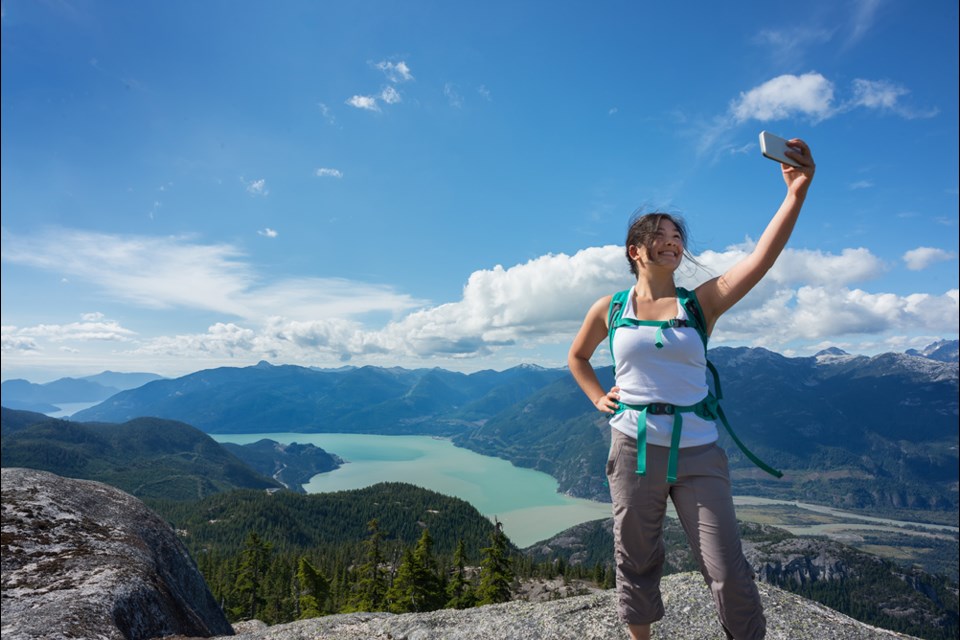With any luck, visitation to the Sea to Sky will be back to typical levels sooner rather than later.
But with those numbers creating issues in myriad ways, especially in recent years, the Sea to Sky Corridor Destination Development Council is hoping that a new initiative will help those visitors enjoy their stay in a wiser manner.
The council, formed last year as part of a Destination BC-led process and made up of destination marketing organizations and other stakeholders from North Vancouver, West Vancouver, Bowen Island, Squamish, Whistler, Pemberton, Lillooet, Bridge River Valley and the Squamish-Lillooet Regional District, received $366,347 for a visitor education initiative it will look to launch before guests return in droves.
Tourism Squamish executive director Lesley Weeks, whose organization took the lead and made the grant application, said the funding will kick start Phase 1 of the campaign.
Weeks added that more than 400 participants and tourism partners addressed critical issues as part of the council's work.
Skyrocketing visitation
Among the recurring themes were skyrocketing BC Parks visitation, increasing search and rescue callouts, higher traffic volumes, flagrant disrespect for natural settings, and First Nations' concerns over the amount and type of recreation that was happening.
"One of the key things that bubbled up was that we needed to work on a visitor education initiative for the Sea to Sky, a co-ordinated effort to start handling some of the things that we're seeing, like exponential growth of recreation users," Weeks said.
The strategy's nuts and bolts are still being worked out. From a high level, Weeks said that the overall content will hammer home the concepts of respect, proper outdoor conduct, preparedness, environmental awareness and responsible social media use. With some issues more prevalent in one area or another, there will also be opportunities to localize the approach.
"We'll have cohesive messaging throughout the Sea to Sky region, but we can adapt it to our own individual communities based on what we're seeing," she said. "Some may be more applicable in other areas, so we can tweak that based on a community's needs, but the messaging will be universal."
Weeks said the council is looking at Phase 1 rollout this spring "so we actually have some things in place for what we anticipate to be a really similar season to last year in terms of heavy volume."
As well, in addition to the content, the places and means of communication are still under discussion. The overarching goal, however, is to display the messaging at common "choke points" starting at the airport and extending up Highway 99.
Those decisions will be made based on the results of ongoing consultation. Weeks said the council is currently soliciting feedback on the campaign's themes and messaging from stakeholders ranging from user groups to search and rescue groups to chambers of commerce and destination marketing organizations. A public survey is expected to go live later this month.
"We're hoping that we can get a lot of resident engagement from all the different communities," she said. "Once we get that back, it'll really help us hone in on the messaging and we'll start to figure out what the creative looks like to go with that messaging and where it'll go."
Another element of the campaign is education for tourism businesses, which Weeks described as a means of having everyone on board as opposed to stemming problems originating in the industry.
"It's providing training on responsible marketing and what their role would be, ensuring that the messaging reaches their staff and then is turned out to the visitors," she said. "It's about getting everybody on the same page … so that visitors are hearing [the message] everywhere that they go at all the different touchpoints.
"Any successful program will have the residents behind it and championing it."
One significant point will be the responsible use of social media, citing Jackson Hole's campaign against geotagging as an example.
Social media’s role
"If we can better manage these areas on social media as an example, and encourage visitors to do the same, hopefully, we can keep our backcountry more accessible for everybody," said Weeks, before adding that it applies to the front country as well.
Tourism Whistler is eager to see the campaign kick-off as it aligns with TW's long-term vision and strategy, according to the vice president of destination and market development Karen Goodwin, the organization's council member.
"Involvement in this council has granted us the opportunity to work collaboratively with the Seat to Sky Corridor to identify our shared challenges in visitor behaviours," Goodwin said in a statement. "As we rebuild our guest economies throughout the corridor, this partnership has also opened up access to provincial funding to assist in the development of aligned strategies and initiatives to protect our natural environment and support community well-being."
Improved bike park
The Squamish Off-Road Cycling Association (SORCA) also received $65,642 for improvements to the mountain bike skills park at Brennan Park Recreation Centre.
"The focus will be to shift and separate the two jump lines and return line, upgrade and pave the pump track, renew some technical features and overall give it a 'facelift,'" SORCA executive director Helen Beynon wrote in an email to The Chief, adding that the group hopes to get the project underway in the spring or summer, depending on contractor availability.



